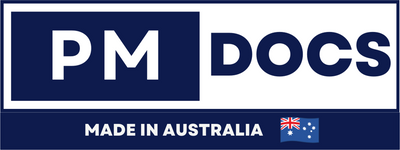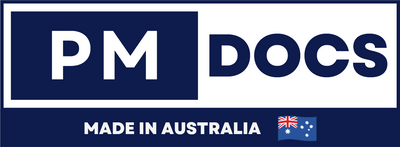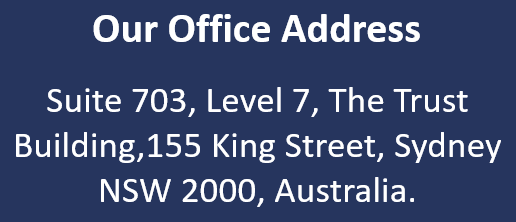How Consultants Use NIST CSF 2.0 Toolkit In Australia?
Introduction
The National Institute of Standards and Technology (NIST) has developed a series of guidelines and standards aimed at improving cybersecurity across various sectors. NIST compliance refers to adhering to these guidelines to ensure a high level of security. For many organizations, aligning with NIST standards is not just about compliance but also about adopting best practices to safeguard their operations. These standards are comprehensive, addressing a wide range of cybersecurity aspects, from risk management to information protection, making them essential for businesses aiming to fortify their defenses. The NIST CSF is a voluntary framework designed to help organizations manage and reduce cybersecurity risks. It provides a flexible approach that can be tailored to fit specific needs, making it a valuable tool for businesses worldwide, including those in Australia. The flexibility of the framework allows organizations to integrate it with their existing security measures, ensuring a seamless enhancement of their cybersecurity posture. Moreover, as cyber threats evolve, the NIST CSF offers a scalable approach that can adapt to new challenges, ensuring long-term resilience.

What Is The NIST CSF 2.0 Toolkit?
The NIST CSF 2.0 Toolkit is an updated version of the framework that offers enhanced tools and resources for cybersecurity management. It builds upon the foundation of the original framework, integrating the latest insights and technologies to address emerging threats. This updated toolkit acknowledges the dynamic nature of the cybersecurity landscape and incorporates feedback from various sectors to ensure its relevance and effectiveness.
Key Components of the Toolkit
-
Identify: This component focuses on understanding the organization's environment to manage cybersecurity risk. It involves asset management, business environment understanding, governance, risk assessment, and risk management strategy. By identifying critical assets and potential vulnerabilities, organizations can prioritize their security efforts where they matter most. This proactive approach is essential in creating a robust defense mechanism that preempts potential threats.
-
Protect: The protect function develops and implements safeguards to limit the impact of potential cybersecurity events. This includes access control, awareness and training, data security, information protection processes, and maintenance. Implementing these safeguards not only protects against unauthorized access but also ensures that employees are informed and vigilant against potential threats. Continuous training and system maintenance are key to sustaining a strong cybersecurity posture.
-
Detect: This involves identifying the occurrence of cybersecurity events promptly. It includes continuous monitoring, detection processes, and security event analysis. Early detection of cyber incidents can significantly reduce the damage they cause. By having a robust detection mechanism, organizations can quickly respond to breaches, minimizing their impact and preventing further exploitation.
-
Respond: Responding to detected cybersecurity incidents is crucial. The toolkit provides guidance on response planning, communications, analysis, mitigation, and improvements. A well-defined response plan ensures that organizations can act swiftly and effectively during an incident, reducing downtime and operational disruptions. Regularly updating and testing response strategies is vital to ensure they remain effective against evolving threats.
-
Recover: After an incident, recovery is necessary to restore services and reduce the impact. This section includes recovery planning, improvements, and communication strategies. A strong recovery plan not only restores business operations but also instills confidence among stakeholders. By learning from incidents, organizations can implement improvements that bolster their defenses against future attacks.
The Role Of Consultants In Australia
Consultants play a pivotal role in implementing the NIST CSF 2.0 Toolkit within organizations across Australia. Their expertise helps businesses navigate the complexities of cybersecurity frameworks and tailor solutions to meet specific needs. By leveraging the knowledge and experience of consultants, organizations can efficiently integrate the toolkit into their existing operations, maximizing its benefits.
How Consultants Assist Organizations
-
Assessment and Gap Analysis: Consultants begin by assessing the current cybersecurity posture of an organization. They conduct a gap analysis to identify areas that need improvement to align with the NIST CSF. This initial assessment is crucial as it provides a clear roadmap for enhancing the organization's security measures. By understanding the existing gaps, consultants can prioritize actions that deliver the most significant impact.
-
Customized Implementation: Based on the analysis, consultants customize the implementation of the NIST CSF 2.0 Toolkit. This includes setting up processes and technologies that address identified gaps and enhance overall security. Tailoring the framework to the unique needs of an organization ensures that it addresses specific vulnerabilities and aligns with business objectives. This bespoke approach enhances the effectiveness and efficiency of the cybersecurity strategy.
-
Training and Awareness: Educating employees about cybersecurity is vital. Consultants provide training sessions to ensure everyone understands their role in maintaining security. An informed workforce is a critical line of defense against cyber threats. By fostering a culture of cybersecurity awareness, organizations can significantly reduce the risk of human error leading to security breaches.
-
Continuous Monitoring and Improvement: Cybersecurity is an ongoing process. Consultants help set up continuous monitoring systems and regularly review and update security measures as threats evolve. This proactive stance ensures that organizations remain vigilant against new and emerging threats. By continuously improving their security posture, organizations can adapt to the ever-changing cybersecurity landscape.
Real-World Application In Australia
Many businesses in Australia, from small enterprises to large corporations, have successfully leveraged the NIST CSF 2.0 Toolkit with the help of consultants. For instance, a financial services company might use the toolkit to enhance its data protection measures, while a healthcare provider might focus on securing patient information. In the education sector, institutions might prioritize safeguarding student data and intellectual property, while manufacturing companies could focus on protecting their operational technologies from cyber threats.
Benefits Of Using The NIST CSF 2.0 Toolkit
Implementing the NIST CSF 2.0 Toolkit offers numerous benefits to organizations, including:
-
Improved Risk Management: By identifying and addressing risks proactively, businesses can significantly reduce the likelihood and impact of cybersecurity incidents. This proactive approach not only prevents potential breaches but also reduces the costs associated with incident response and recovery. Effective risk management is critical in maintaining business continuity and protecting valuable assets.
-
Enhanced Compliance: Aligning with NIST standards helps organizations meet various regulatory requirements and build trust with clients and stakeholders. Compliance with recognized standards demonstrates a commitment to cybersecurity, which can be a competitive advantage in sectors where data protection is paramount. This alignment can also simplify audits and regulatory checks, reducing administrative burdens.
-
Resilience Against Threats: The framework's focus on protection, detection, and response ensures that organizations are prepared to handle cyber threats effectively. This resilience is crucial in an era where cyber threats are increasingly sophisticated and persistent. By being prepared, organizations can minimize disruptions and maintain their reputation even in the face of cyber incidents.
-
Increased Stakeholder Confidence: Demonstrating a commitment to cybersecurity through NIST compliance can enhance the reputation of a business, leading to increased customer confidence. A strong cybersecurity posture reassures stakeholders that their data is protected, fostering trust and loyalty. This trust is invaluable in building long-term relationships with clients and partners.
Challenges In Implementation
While the NIST CSF 2.0 Toolkit provides a comprehensive approach to cybersecurity, its implementation can present challenges. These may include resource constraints, resistance to change, and the need for ongoing updates and training. Limited budgets and a lack of skilled personnel can make it difficult for organizations to adopt and maintain the framework effectively. However, with the guidance of experienced consultants, these challenges can be overcome. Consultants can help organizations prioritize their efforts, making the most of available resources to achieve meaningful security improvements.
Conclusion
In a world where cyber threats are constantly evolving, the NIST CSF 2.0 Toolkit is an invaluable resource for organizations aiming to bolster their cybersecurity defenses. In Australia, consultants are instrumental in guiding businesses through the process of adopting and implementing this framework. By leveraging the expertise of consultants and the comprehensive nature of the NIST CSF 2.0 Toolkit, organizations can not only achieve compliance but also build a robust cybersecurity posture that safeguards their operations and fosters trust with their stakeholders. This proactive approach to cybersecurity ensures that businesses remain resilient and competitive in an increasingly digital economy.




